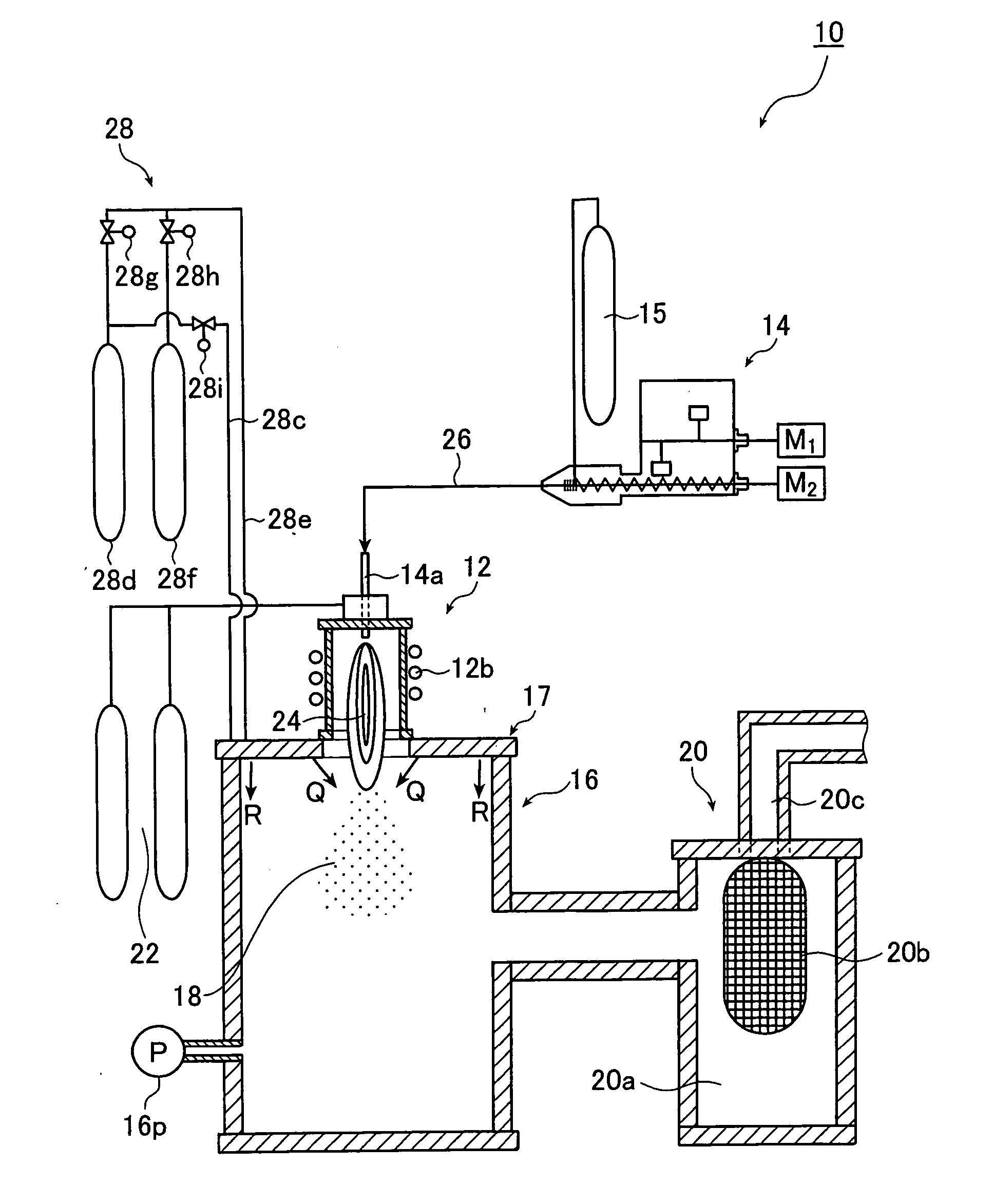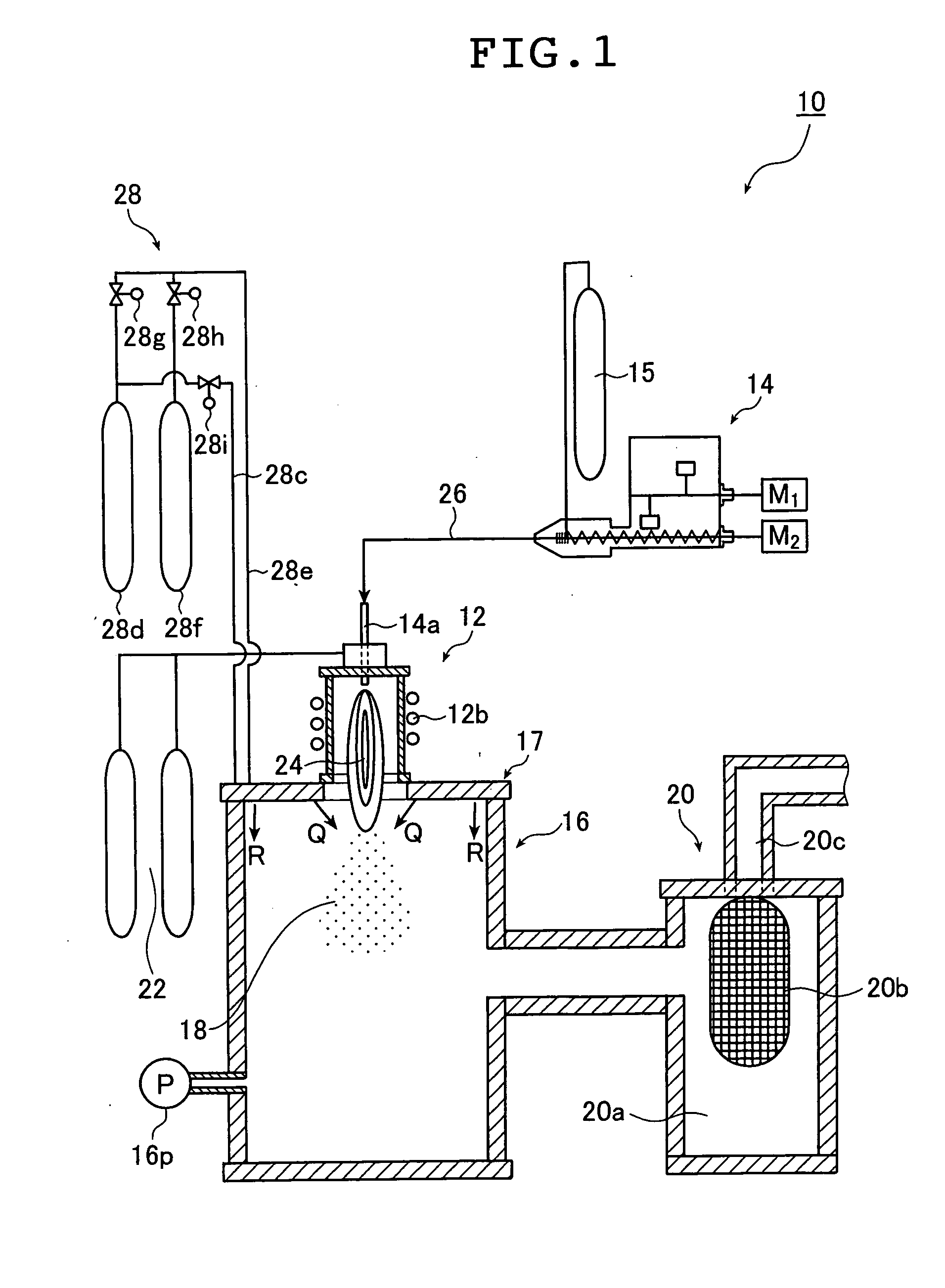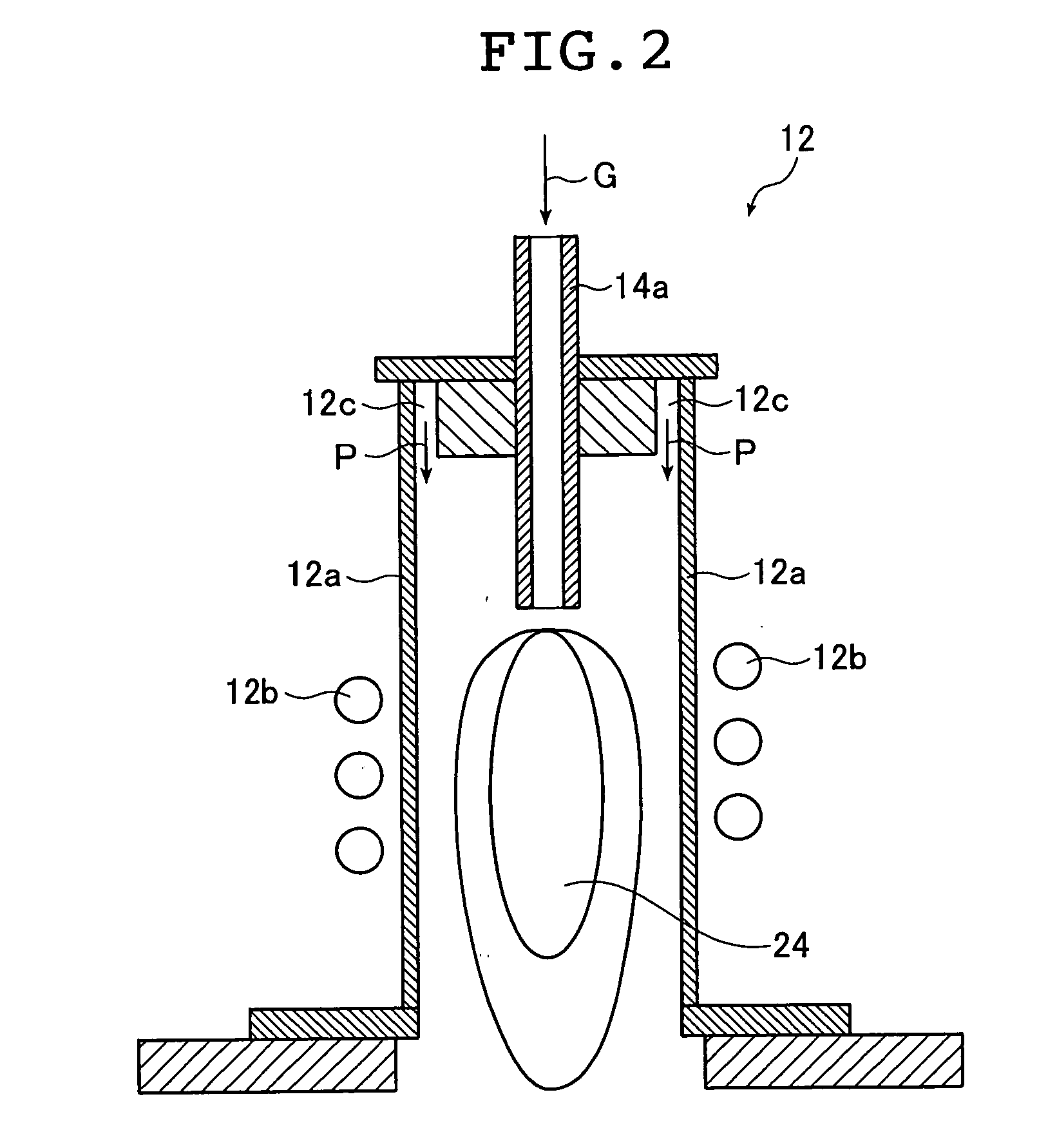Process for producing ultrafine particles
a technology of ultrafine particles and processing equipment, which is applied in the field of process for producing ultrafine particles, can solve the problems of inability to produce precision sinter molding materials, inability to produce fine particles whose surfaces are coated with thin films, and inability to reduce the stability of fine particles, etc., and achieves high surface activity, novel functionality, and high level of particle size and shape uniformity
- Summary
- Abstract
- Description
- Claims
- Application Information
AI Technical Summary
Benefits of technology
Problems solved by technology
Method used
Image
Examples
example 1
[0112] First, an example in which ultrafine particles of silver were produced and agglomeration and coalescence of the particles to each other were prevented is presented.
[0113] As a material, a silver powder having an average particle size of 4.5 μm was used.
[0114] Further, argon was used as a carrier gas.
[0115] The high frequency oscillation coil 12b in the plasma torch 12 was applied with high frequency voltage of about 4 MHz and about 80 kVA, and a mixed gas of 80 liters / min of argon and 5 liters / min of hydrogen was introduced as the plasma gas from the plasma gas source 22 to generate an argon / hydrogen thermal plasma flame in the plasma torch 12. Note that, here, the reaction temperature was controlled to be about 8,000° C. and 10 liters / min of a carrier gas was supplied from the carrier gas source 15 of the material supplying apparatus 14.
[0116] The silver powder together with argon as a carrier gas was introduced into the thermal plasma flame 24 in the plasma torch 12.
[0...
example 2
[0121] Next, an example is shown in which the ultrafine silver particles were produced in the same manner as in Example 1, and the amount of the reactive gas was changed to control the particle size.
[0122] As the material, a silver powder having an average particle size of 4.5 μm was used.
[0123] Further, argon was used as the carrier gas.
[0124] Here, the high frequency voltage to be applied to the plasma torch 12 and the supply amount of the plasma gas were the same as those used in Example 1, and an argon / hydrogen thermal plasma flame was generated in the plasma torch 12. Note that the reaction temperature was controlled to be about 8,000° C., and the supply amount of the carrier gas from the carrier gas source 15 of the material supplying apparatus 14 was set to 10 liters / min.
[0125] The silver powder was introduced into the thermal plasma flame 24 in the plasma torch 12 together with argon as the carrier gas.
[0126] Among the gases to be introduced into the chamber 16 by the g...
example 3
[0128] Next, an example will be shown in which ultrafine copper particles were produced and agglomeration and coalescence between the particles were prevented.
[0129] As the material, a copper powder having an average particle size of 5.0 μm was used.
[0130] Further, argon was used as the carrier gas.
[0131] Here, the high frequency voltage to be applied to the plasma torch 12 and the supply amount of the plasma gas were the same as those used in Examples 1 and 2, and an argon / hydrogen thermal plasma flame was generated in the plasma torch 12. Note that the reaction temperature was controlled to be about 8,000° C., and the supply amount of the carrier gas from the carrier gas source 15 of the material supplying apparatus 14 was set to 10 liters / min.
[0132] The copper powder was introduced into the thermal plasma flame 24 in the plasma torch 12 together with argon as the carrier gas.
[0133] Among the gases to be introduced into the chamber 16 by the gas introduction apparatus 28, the...
PUM
| Property | Measurement | Unit |
|---|---|---|
| Angle | aaaaa | aaaaa |
| Angle | aaaaa | aaaaa |
| Angle | aaaaa | aaaaa |
Abstract
Description
Claims
Application Information
 Login to View More
Login to View More - R&D
- Intellectual Property
- Life Sciences
- Materials
- Tech Scout
- Unparalleled Data Quality
- Higher Quality Content
- 60% Fewer Hallucinations
Browse by: Latest US Patents, China's latest patents, Technical Efficacy Thesaurus, Application Domain, Technology Topic, Popular Technical Reports.
© 2025 PatSnap. All rights reserved.Legal|Privacy policy|Modern Slavery Act Transparency Statement|Sitemap|About US| Contact US: help@patsnap.com



